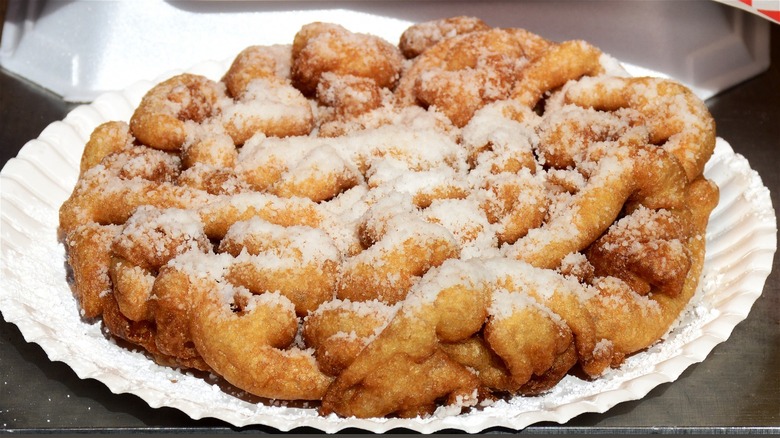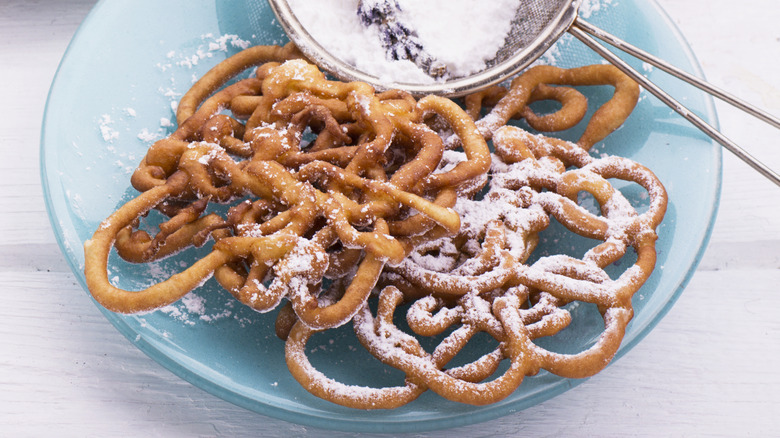The Obvious Origin Of Funnel Cake's Name
What are carnivals and county fairs without fried dough? The irresistible aroma of sugary treats fills the air with sweet cheerfulness that reminds us of happy times. Funnel cakes are an indispensable part of the experience. For those who may struggle to tell the difference between elephant ears and funnel cakes, funnel cake is golden-fried dough in a kind of lattice shape sprinkled with powdered sugar. It has a history as rich as its taste but the same cannot be said about funnel cake's nomenclature. In fact, it's as obvious as can be.
Funnel cake's name can be attributed to the utensil cooks use to give it a distinctive lattice design. As you have probably guessed by now, it is none other than, drumroll, the funnel. Funnel cakes are made by pouring liquid cake batter into hot oil through a funnel. Needless to say, it wouldn't be a funnel cake without the funnel. People preparing the cakes pour the batter into oil to form circular patterns. Funnel cakes look somewhat chaotic but that is the whole point. While powdered sugar is the standard topping, people also add berries, homemade whipped cream, syrups, and myriad foods.
Funnel cakes have been around since colonial America
When German immigrants came to settle in Pennsylvania in the 17th and 18th centuries, they brought with them their culinary traditions. That was when America was introduced to funnel cakes. The Pennsylvanian Dutch called them "Drechter Kuche." Back in the day, they were enjoyed during breakfast but now they are served during holidays, harvest festivals, and fairs.
The earliest recipe for funnel cake was found in a German cookbook in 1879. It is believed that funnel cakes became hugely popular in the United States after they were introduced at the Kutztown Folk Festival in 1950. The folklife festival featured the Pennsylvania Dutch culture and tradition in the form of food and entertainment. Funnel cake was a part of it.
Today, people around the world enjoy funnel cakes in their own unique ways like the Indian Jalebi and Tippaleipä in Finland. No matter the form, they will leave you licking your fingers for sure.

